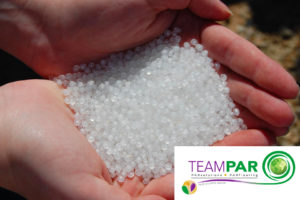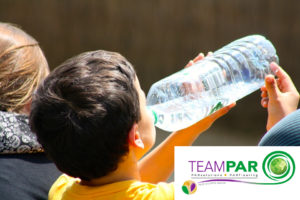We all know that plastic pollution is threatening the survival of our planet. This year’s mission – change our attitude and behavior towards plastics. At TeamPAR, we support this initiative and we hope to help educate those around us of the harmful effects of plastic pollution on our planet.
 Did you know that plastic was invented in 1907? Plastic has become omnipresent in our daily lives. If nothing changes in our plastic consumption habits, by 2050 there will be more plastic in the oceans then there are fish (by weight). Do your part and make sure to use biodegradable or reusable materials, or at a minimum, ensure recycling properly occurs.
Did you know that plastic was invented in 1907? Plastic has become omnipresent in our daily lives. If nothing changes in our plastic consumption habits, by 2050 there will be more plastic in the oceans then there are fish (by weight). Do your part and make sure to use biodegradable or reusable materials, or at a minimum, ensure recycling properly occurs.
Plastics, especially phthalate and Bisphenol A, have been found to interfere with the stability of human hormones. Ninety-three percent of Americans test positive for the presence of BPA in their bodies. Growth hormones have been proven to be affected, with the thyroid hormones most radically compromised. Every time you open a packaged food container or drink from a plastic water bottle, there are chemicals that leak from the packaging into the contents.
In addition to plastics from containers, next time you order seafood, will you ask, “May I have a side of plastic with my fish please?” Of course not, no one has ever said that! Microplastics that are produced from plastic products are being dumped into our rivers and oceans every day. Birds and fish mistake them for food, causing plastics to show up in drinking water, sea salt and even honey! Toxins ingested by sea animals end up on dinner plates and humans invariably absorb the carcinogens contained in plastics when they consume seafood. Microplastics come from a range of sources including pre-production plastic pellets, microbeads used in cosmetics, food packaging and plastic bottles.
Not only are plastics getting onto our plates from these sea animals, but they are also poisoning and injuring many of them as well. According to the WWF, 100,000 marine animals, including sea turtles and whales and more than 1 million seabirds are reported to die each year from ocean pollution by either ingesting or being entangled in marine debris. With a staggering 8 million tons of debris entering our world’s oceans each year, it causes a significant impact on marine life. Sea animals entangled in plastic debris experience strangulation or growth deformations because the plastic is often mistaken for food, causing blockages within the animal’s digestive systems leading to eventual death.
With nearly 13% of our municipal waste stream made up of plastics, it is no surprise that we are seeing significant clogging in our waste streams and landfills. Every piece of plastic that is thrown away becomes a long-term resident of our waste system – assuming that it doesn’t escape that system. There are places in the world where so much plastic congregates that the debris area is two times the size of Texas.
As you travel to the grocery store, consider what you are purchasing, and what you are using to carry them back to your car. Shoppers worldwide are using approximately 500 billion single-use plastic bags per year. This translates to about a million bags every minute across the globe, or 150 bags per year for every person on earth. And the number is rising. The IOSEA reported that the lifespan of the average plastic bag may be between 200 to 400 years, well outlasting the affected animal. You should also consider using reusable bottles, as the time to break down a plastic bottle is between 450 and 500 years.
Next time you are shopping and are considering purchasing a pack of water bottles, think again and consider purchasing a reusable water bottle instead. When you are at the checkout line, choose reusable bags or opt for the paper bags instead of the more common plastic bags. Not only are we affecting marine life through our over-use of plastic, but we are affecting our own bodies too. For more ways on how you can be the change, visit the Earth Day Movement’s website for ways to institute change in your school, organization or business.






